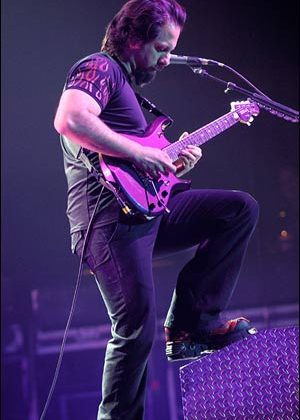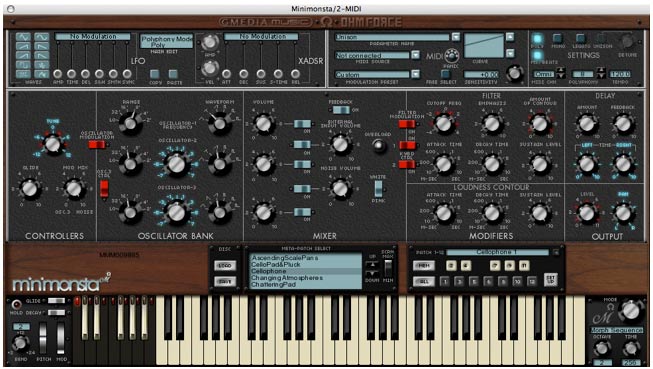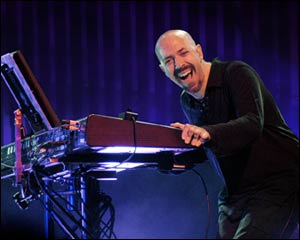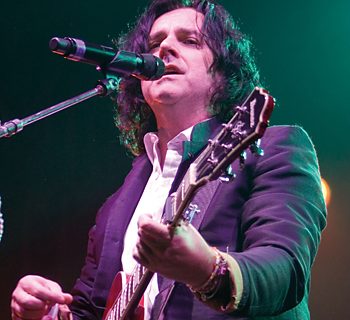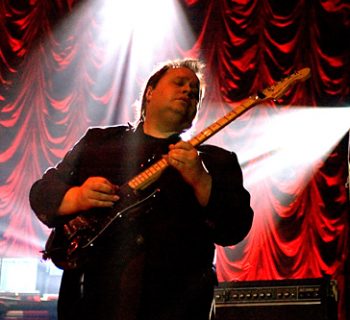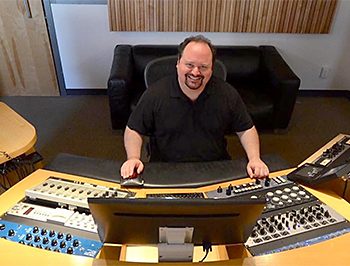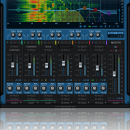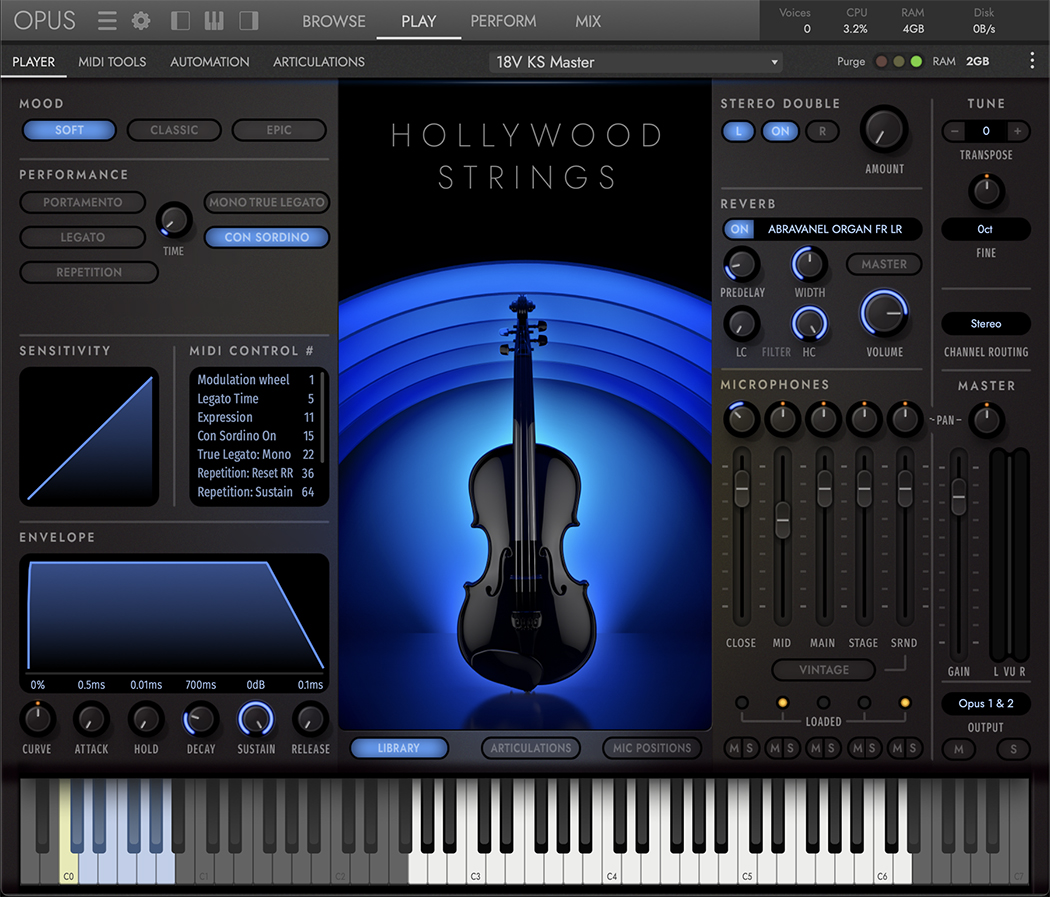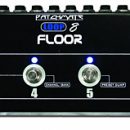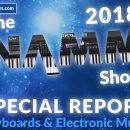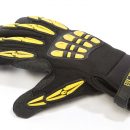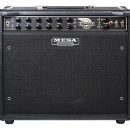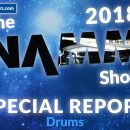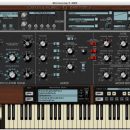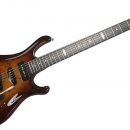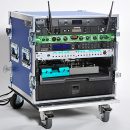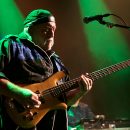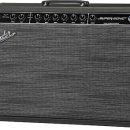Simply put, John Petrucci is the man. He has become the favorite son of prog, an icon of virtuosic musicianship, and my own personal guitar hero for close to 14 years. On March 11, MusicPlayers.com took the opportunity to talk with John backstage prior to Dream Theater’s San Francisco show. We spoke in-depth with John regarding his passionate playing, sick technique, incredible tone, and humble nature.
MPc: One of my favorite aspects to your lead playing has always been those “spacey”, fusion-inspired moments such as the solo from Lines in the Sand, A Change of Seasons, and over the closing arranging exercises in your instructional video, “Rock Discipline”. This obviously involves modal playing over the changes (with a frequent emphasis on the Dorian mode). Can you offer any insight into your approach in creating these magical moments with regards to chord movement, scale choice, or other considerations?
John: Well, I think there are a couple of things to consider. One of them really has to do with knowing the chords that are going by and listening for them. Once you have knowledge of that, then you can kind of just go over what your options might be. Simple things like hitting chord tones and knowing where the strong notes are and where the passing notes are rely on having that knowledge of the chords as you’re playing over them. With regards to modal choices, at this point, it’s really become more of an “ear thing” where I can hear what might sound good ahead of time. I guess there is still some experimentation on my part with regards to choosing from the various options, but for the most part, I can kind of hear ahead of time what each of those options will sound like.
MPc: So when you’re playing Dorian, for example, you’re going to naturally gravitate a lot to the natural 6th tone… Are there other certain scale intervals or alterations to the chords where you say, “I really like that sound a lot,” and then you tend to come back and incorporate them frequently in your playing? For instance, when The Police where forming their sound, they found that they really loved that sus2 or that add9 sound and implemented that a lot into their writing.
John: I use that [sus2 or add9 chord voicings] a lot! I love that actually! [laughs] I associate that a lot with Rush, actually – the big sus2 chords. Another thing I like, that’s kind of that Steve Vai or Satriani sound, is the Lydian sound – the raised fourth and the major third. I think that’s great. On my solo album, I have a song, “Glasgow Kiss” which has a mixolydian sound. It’s very Steve Morse sounding. I really think that everything has its own flavor that has something appealing.
MPc: Your stage rig has changed quite a bit over the years. The tone that we, and many, long associated with you was circa Awake and we think you were getting your basic tone by playing the Ibanez JPM series guitars loaded with DiMarzio Steve’s Special in the bridge and Air Norton in the neck through Mesa/Boogie Mark IIC+ heads through Rectifier standard cabs, the Lexicon PCM 70 for reverb, and the TC Electronic 2290 for chorus and delay. Now you are using your own signature Ernie Ball/Music Man guitars and we see Mesa/Boogie Road Kings and Lone Stars on stage, and different effects. Can you offer any other insights into your Awake-era tone as well as your current stage rig?
John: That album [Awake] was a combination of the Mark IIC+ and the Dual Rectifiers. It’s the only album where I actually did quadruple tracking. So, when I recorded, if it was a rhythm part or figure, I played two tracks, left and right, of the IIC+, and two tracks, left and right, of the Dual Rectifier. I still use the [TC Electronic] 2290. I don’t use the Lexicon piece [PCM 70] anymore. I’m using all TC Electronic stuff now. With regards to the 2290, I guess I’m just in love with it! I’ll never not have one of those in a rig. I still use that. I use it mainly for chorusing and for a [stereo] split. I use a 7ms [delay] setting [between left and right speakers] on pretty much every sound. [Editor’s note: This is a technique utilizing a delay setting whereby one-half of the signal (either the entire left or right channel) is delayed by a slight amount in order to create the illusion of depth and space between the speakers. The delay is set 100% wet with 0% feedback so that the entire signal for that channel is delayed by the set amount with no dry (non-delayed) signal or repeats present]. I don’t really use that [2290] for echo. Instead, I use a TC Electronic M3000 unit for all of the delays.
MPc: What’s your main reverb unit now?
John: I don’t really use reverb, to be honest with you. It’s not my favorite effect on guitar. If I were going to use it, I might use the M3000 for reverb.
MPc: Any amp or effects settings that you are willing to share?
John: Sure.
MPc: Let’s start with your lead sounds, then.
John: Well, there are a couple of things… I just started to reintegrate the [Mark] IIC+ into my rig lately, but I’ve been using the Road Kings on the last few albums and the last few tours, and I still use them. So, just starting with that… It [the Road King] is kind of like a Dual Rectifier and it has different modes on each of the channels. If you take one of the lead modes, you have the option of choosing between Vintage and Modern. I use the Vintage mode. Also, on the Road King, you can select between different power tube combinations. I use 6L6’s. I also use the Pentode setting and I set it to Bold. As far as the actual controls are concerned… I usually dial the presence pretty low. With regards to treble and bass… if you read the manual, it also says this in there: you should leave them at around twelve o’clock and play with them from there, but that’s a good starting point. I’ll dial out some bass and maybe add a little treble. The middle is always set so that it’s kind of backed off a bunch… maybe between nine and ten o’clock.
MPc: What about with the Mark IIC+?
John: Now with the IIC+, a couple things about that. That amp has a lot of bass, so I have to dial the bass pretty low otherwise it gets too flubby. The bass can be set almost all the way off.
MPc: I set my Mark IV at about two.
John: Yeah, exactly. Also, the treble control on that amp affects the gain, so I kind of like to keep the treble up so it adds that extra gain. So it might be set at seven or so. You have to fool around with it, depending on the brightness of the guitar. The middle is dialed back as well to get that scooped sound. You have to be careful about setting the gain controls. You don’t want to just crank them. I set the first gain at maybe seven or eight.
MPc: So even using the classic “V” curve on the amp’s graphic EQ, you still dial the mids back with the rotary knobs?
John: Yeah, I do both. If I’m using it for a lead, I might turn the middle up a bit, but it’s never straight up. It’s always below. Sometimes with the “V” curve thing, I trim down some of the highs. Also, I usually set the presence on that amp at three or four.
MPc: How do you mic your cabs and get your tone in the studio?
John: Well, I think I’ve found the secret, at least for me. I recently played a solo on Marty Freidman’s new record and I played a solo on Derek Sherinian’s new record just yesterday. In both instances I walked into the studio and told them I needed my cabinet and my head [Editor’s note: John used a Mesa/Boogie Road King head and Traditional Rectifier 4 x 12 cabinet] and two microphones, and got a guitar sound in five minutes. This is what I do. First of all, the cabinets are usually closed back, so there’s no need to mic the back. They have Celestion Vintage 30’s in them, and they’re the smaller Traditional Rectifier cabinets, not the big ones. I think the cabinet should be in a fairly big room. Anytime I’ve ever tried to put a cabinet in a closet or a small room, it just doesn’t sound right. There are too many weird reflections happening in that case. The speaker cabinet needs to have some sort of throw, like when it’s in a big room. You can put a baffle in front of it if you need to, like maybe ten feet out front, but otherwise I think it needs to breath, for whatever reason.
I use a [Shure SM] 57 like this [Editor’s note: John showed mic position to be on axis, about an inch and a half radially outward from edge of dust cap in center of cone, close mic’d, almost touching grill cloth]. You never want to put the microphone in the center of the speaker; it’s just way too bright. Then you can fool around with how much off center you go. Obviously, the further away from the center you go, the duller the sound gets. Also, I use a Sennheiser MD421. That’s the second mic, and I position it the same way. You can either place it on the same speaker or on a different speaker. Then, you just blend the two of those. Usually, if you have two faders, the 421 is sitting below the 57. So the 57 is the basic sound, and the 421 is a little darker and it’s very fat.
MPc: So, you use the MD421 to fill out the sound of the SM57.
John: Yeah. It adds a lot of girth to the sound.
MPc: Do you pan each mic discretely?
John: No, they’re not panned, they’re just combined into one channel.
MPc: Are you compressing them at all?
John: No. No compression.
MPc: Are you EQing after that?
John: No EQ. You just have to go into a really good mic pre. I like to use Neve mic pre’s… Flat, everything’s flat.
MPc: So how has this approach changed from when you were recording Awake?
John: You know, to be honest with you, at that point in my career I wasn’t as savvy towards the engineering side so I don’t even really know what happened! [laughs]
MPc: Any other recording secrets? You and Mike have been producing Dream Theater albums now and they’re sounding incredible, so you did a lot of things right. Any secrets in terms of getting the band’s sound so cohesive?
John: Well, first of all we make sure that all of the sounds that we get are as clean as possible. We work with a really good engineer so that everything is recorded well; everything is at a good level, there are no weird noises, there isn’t any clipping anywhere, etc. This way your source is really good. From there, we try to keep the performances as tight as we can. We’re super-anal with the musicianship on the recording. This way, once you add in double tracked guitar and bass and keyboards, it doesn’t sound like a mess… just cohesive.
MPc: You are highly regarded for many things associated with your playing, not least of all your amazing technique. What is your practice routine, and what advice would you give to advanced guitar players looking to take their technical abilities to the next level?
John: Well currently, I’m on tour right now, so I try to practice the songs from the tour. That is really helpful for me on a couple of different levels. One is, if a song has difficult passages…
MPc: “If” a Dream Theater song had difficult passages? [laughs]
John: When it has difficult passages! [laughs]… Whether it’s a solo or a unison, I use that as a practice routine. I can take the unison part in “Take the Time”, for example, and I can sit there for ten minutes with a metronome and just play that part. So it’s doing a couple of things. It’s warming up my hands – both of my hands, and a lot of those passages cover multiple techniques. There’s string skipping, there’s legato, there’s arpeggios… it just covers it all. The second thing it does for me is it prepares me mentally, so when I go up on stage I don’t have that weird feeling of “Oh shit… How does that go?” [laughs]
It helps me get a confidence level ensuring that I know all the material, that I won’t forget it, and I’ll be on top of it. It helps on that level as well. That’s what I use when I’m on the road mostly to warm up. I still have tons of little noodly finger exercises and things. There are millions of chromatic things, and scale things, and stuff like that that I can draw from, but I find that practicing the actual pieces of the songs helps.
MPc: You’re kind of using them in the etude sense?
John: Yeah.
MPc: So speaking of etudes and practice routines, any news of when we might see a second instructional video from you?
John: You know everybody keeps asking me, so the timing must be right… either that or it’s taking me way too long! [laughs] After this tour we’re going to be off for the summer, so I’m going to use that time to – that’s my goal – to do an instructional video. It’s been a long time, so I’m definitely doing it.
MPc: What’s in store next for Dream Theater? Any plans for the next album?
John: Well to be honest with you, we haven’t discussed the new album yet. Our short term plan is that we’re recording a DVD on the last show of this tour, so we have that that we are focusing on, and then we know that we’re going to take a break over the summer, so we won’t reconvene to start writing for the new album until the Fall.

